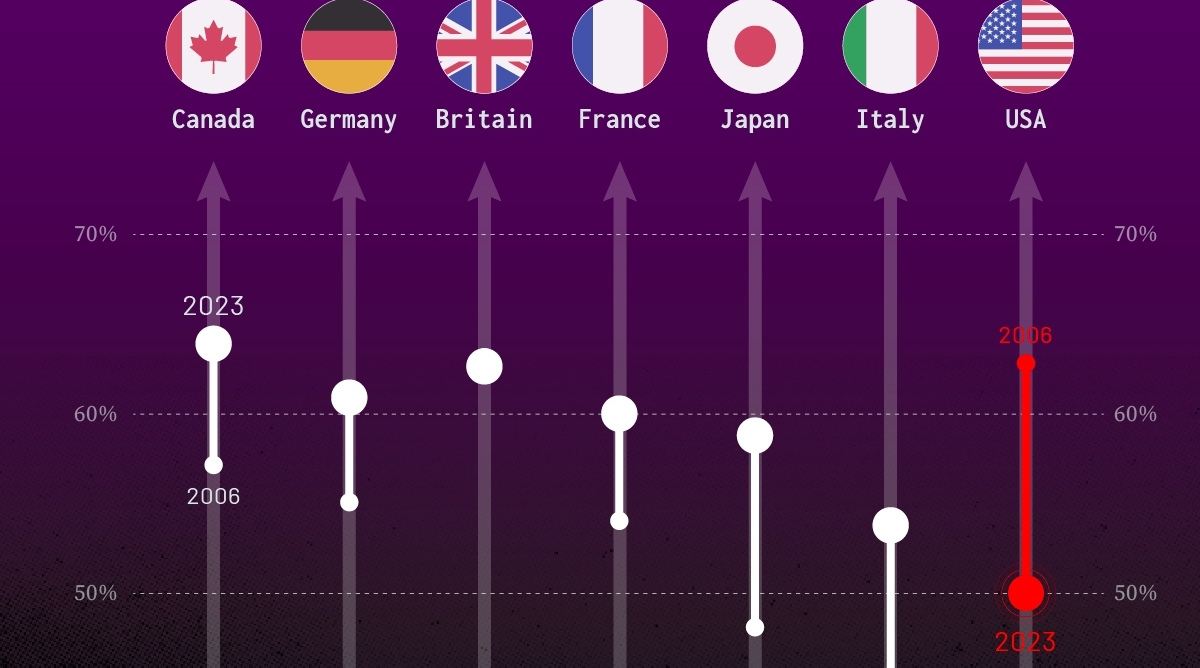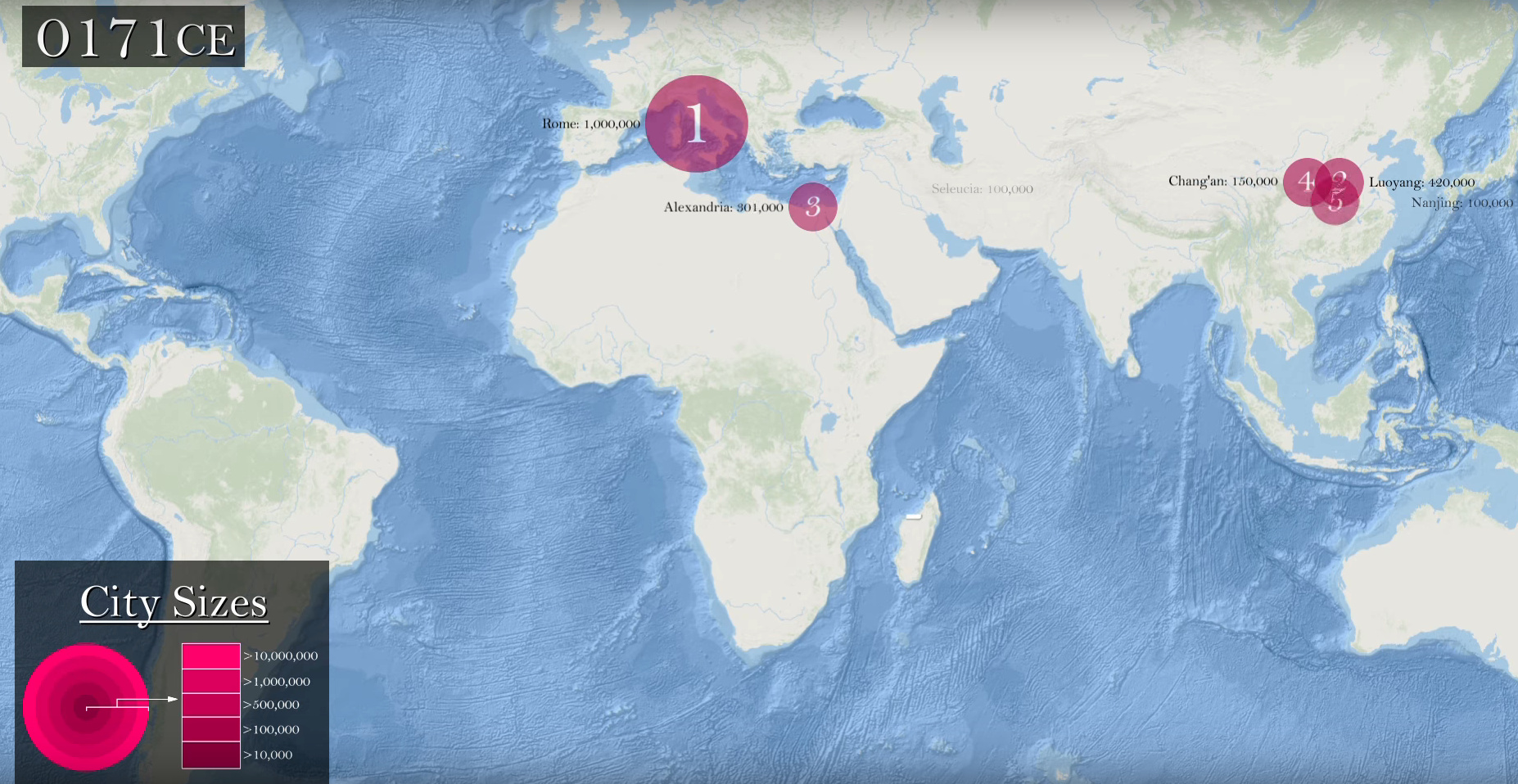Misc
Video: The 5 Largest Cities Throughout the Course of History
The world’s most influential cities have certain attributes that make them appear timeless.
Metropolises like New York City, Hong Kong, Shanghai, and London have unprecedented size, opportunities, economic might, and cultural significance, that it’s easy to imagine them as permanent and unparalleled fixtures on the world stage.
However, any glance at world history shows us immediately that these places are not as exceptional or as timeless as we would like to think. Over time, it seems that even the most important cities eventually fall or slip in status.
That’s why a glance at the record books can be humbling, as we come across the names of many ancient cities that were the most important during their time – places like Luoyang, Ctesiphon, Pataliputra, and Constantinople – that today, the majority of people are much less familiar with.
The 5 Largest Cities Over Time
Today we present to you two videos from the Ollie Bye Youtube channel that show the rapidly changing history of the world’s top cities by population.
It’s incredible to watch the rise and fall of these cities, especially when we’re talking about the centers that were the undisputed heavyweight champions of their day.
The 5 Largest Cities (Years: 3000 BC to 1600 AD)
Over this massive span of time, the designation of the world’s most populous city shifts 16 times.
Rome keeps the title for an impressive period – over 400 years – while Baghdad and Chinese cities also have impressive runs as well. However, what’s most provoking about the video is the list of lesser-known cities that have held the title, such as Chang’an, Merv (Marv), and Pi-Ramesses.
The 5 Largest Cities (Years: 1600 to 2100)
During this much shorter stretch of time of more modern history, the rate of urbanization is skyrocketing and cities are now growing at exponential rates.
The most populous city shifts nine times – and by the year 2100, it’s projected that the five most populous cities could have 370 million people living between them.
This would be higher than the total population of the entire world in the 12th century.
Politics
Charted: Trust in Government Institutions by G7 Countries
How much do you trust the government and its various institutions? We look at data for G7 countries for the time period of 2006-2023.

Trust in Government Institutions by G7 Countries
This was originally posted on our Voronoi app. Download the app for free on iOS or Android and discover incredible data-driven charts from a variety of trusted sources.
How much do you trust the government, and its various institutions?
It’s likely that your level of confidence probably depends on a wide range of factors, such as perceived competency, historical context, economic performance, accountability, social cohesion, and transparency.
And for these same reasons, trust levels in government institutions also change all the time, even in the world’s most developed countries: the G7.
Confidence in Government by G7 Countries (2006-2023)
This chart looks at the changes in trust in government institutions between the years 2006 and 2023, based on data from a multi-country Gallup poll.
Specifically, this dataset aggregates confidence in multiple national institutions, including the military, the judicial system, the national government, and the integrity of the electoral system.
| Country | Confidence (2006) | Confidence (2023) | Change (p.p.) |
|---|---|---|---|
| Canada | 57% | 64% | +7 |
| Britain | 63% | 63% | +0 |
| Germany | 55% | 61% | +6 |
| France | 54% | 60% | +6 |
| Japan | 48% | 59% | +11 |
| Italy | 41% | 54% | +13 |
| United States | 63% | 50% | -13 |
What’s interesting here is that in the G7, a group of the world’s most developed economies, there is only one country bucking the general trend: the United States.
Across most G7 countries, confidence in institutions has either improved or stayed the same between 2006 and 2023. The largest percentage point (p.p.) increases occur in Italy and Japan, which saw +13 p.p. and +11 p.p. increases in trust over the time period.
In the U.S., however, confidence in government institutions has fallen by 13 p.p. over the years. What happened?
Key Figures on U.S. Trust in Institutions
In 2006, the U.S. was tied with the UK as having the highest confidence in government institutions, at 63%.
But here’s where the scores stand in 2023, across various institutions:
| 🇺🇸 Institutions | Confidence (2023) |
|---|---|
| Military | 81% |
| Judiciary | 42% |
| National Government | 30% |
| Elections | 44% |
| Overall | 49% |
Based on this data, it’s clear that the U.S. lags behind in three key indicators: confidence in the national government, confidence in the justice system, and confidence in fair elections. It ranked in last place for each indicator in the G7.
One other data point that stands out: despite leading the world in military spending, the U.S. is only the third most confident in its military in the G7. It lags behind France (86%) and the United Kingdom (83%).
-

 Technology7 days ago
Technology7 days agoVisualizing AI Patents by Country
-

 Green2 weeks ago
Green2 weeks agoRanking the Top 15 Countries by Carbon Tax Revenue
-

 Markets2 weeks ago
Markets2 weeks agoU.S. Debt Interest Payments Reach $1 Trillion
-

 Mining2 weeks ago
Mining2 weeks agoGold vs. S&P 500: Which Has Grown More Over Five Years?
-

 Uranium2 weeks ago
Uranium2 weeks agoThe World’s Biggest Nuclear Energy Producers
-

 Misc2 weeks ago
Misc2 weeks agoHow Hard Is It to Get Into an Ivy League School?
-

 Debt2 weeks ago
Debt2 weeks agoHow Debt-to-GDP Ratios Have Changed Since 2000
-

 Culture2 weeks ago
Culture2 weeks agoThe Highest Earning Athletes in Seven Professional Sports















